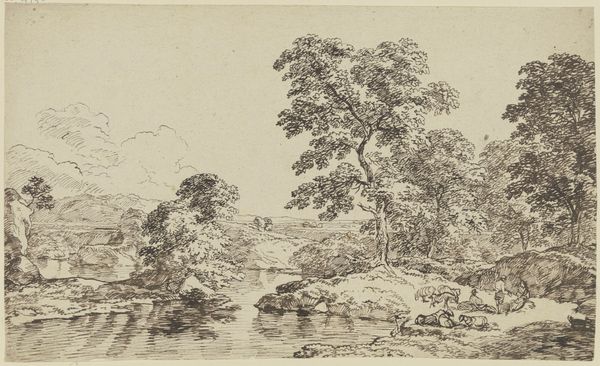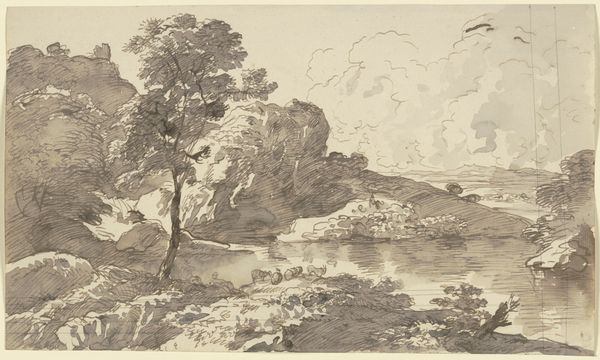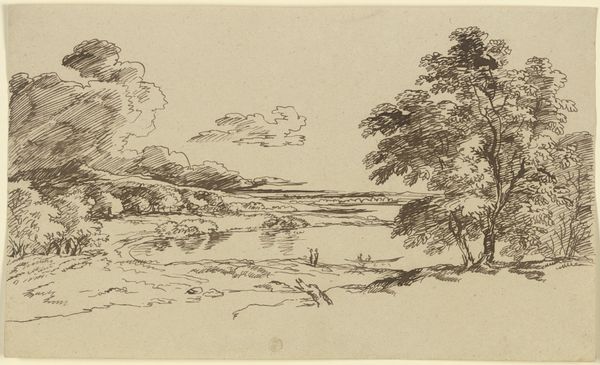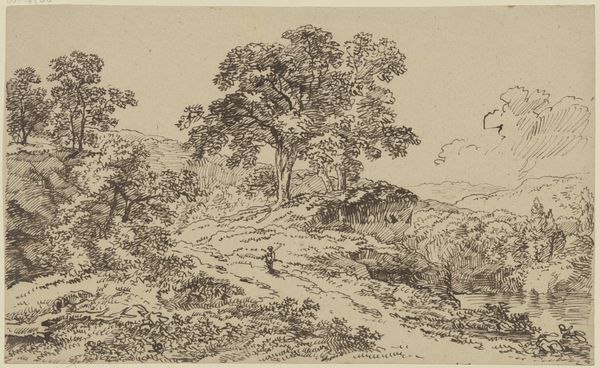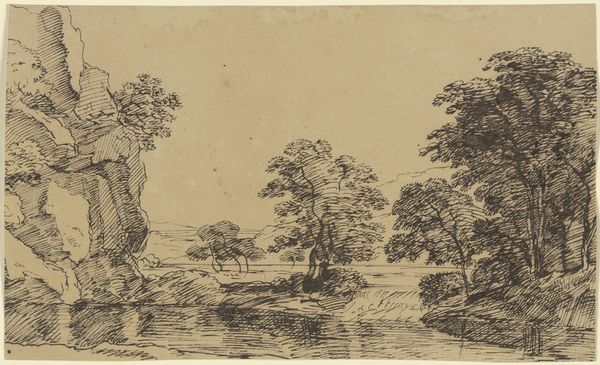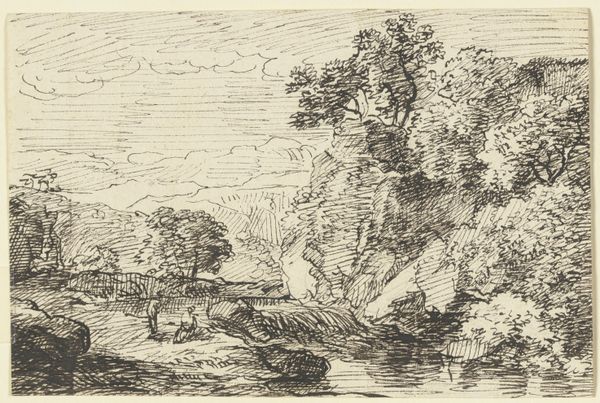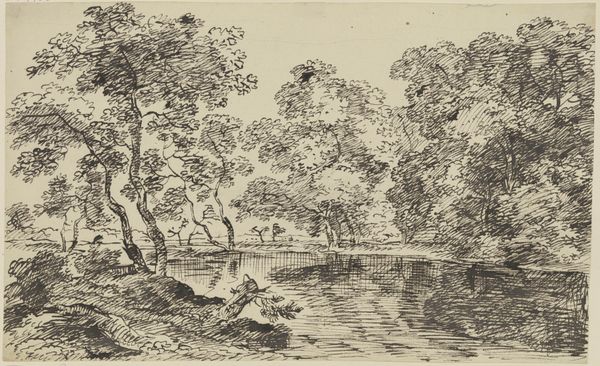
drawing, ink
#
drawing
#
landscape
#
ink
#
romanticism
#
15_18th-century
Copyright: Public Domain
Curator: I'm drawn in by the peaceful, almost melancholic air of this drawing. There's something about the subdued tones and delicate lines that feels quite intimate. Editor: Here we have "Landschaft mit einer weidenden Kuh und einem Hirten" by Franz Kobell, an ink drawing currently housed here at the Städel Museum. The details around its production, like the precise date, remain elusive, but let’s delve into what we can observe and contextualize. Curator: I love that! Even in the uncertainty, there's a story. It seems like he’s trying to capture not just the scenery but a particular mood. The tiny figure of the shepherd almost blends into the landscape, highlighting the dominance of nature. Editor: Absolutely, and the landscape itself speaks volumes about the 18th-century context of artistic patronage and the market for landscape drawings like this. Consider the type of paper, the cost of the ink—these details reflect the accessibility and exchange of such works amongst collectors and amateur artists. Curator: So it was about owning a piece of nature, literally a portable vista? The ink wash is fascinating, too – how it suggests depth and light. It’s simple but evokes so much atmosphere. Editor: Exactly. The ease of producing ink drawings allowed artists like Kobell to meet the demands of an emerging art market eager for accessible, "picturesque" views. What's striking is how the romantic elements of the drawing connect to the rise of landscape painting as a serious genre. This brings questions to my mind; were those types of drawings practice before creating larger, more important landscape pieces? Curator: I like your train of thought, this small sketch has larger significance. The lone cow and shepherd do invoke feelings of nostalgia. A longing for an idealized, perhaps non-existent, rural life. Editor: Indeed! Looking closer, I note how Kobell economized his materials. It invites speculations of his socio-economic standing, access to better quality ink. These were strategic artistic choices rooted in the conditions of production, a clever balance between cost, labor and creative vision. Curator: In the end, regardless of resources, it remains evocative. A quiet reflection on our place within the vastness of the natural world. Editor: Precisely. A poignant reminder that even the simplest materials, when wielded skillfully, can evoke powerful emotional and cultural resonances, offering insights into both artistry and broader socio-economic forces.
Comments
No comments
Be the first to comment and join the conversation on the ultimate creative platform.

